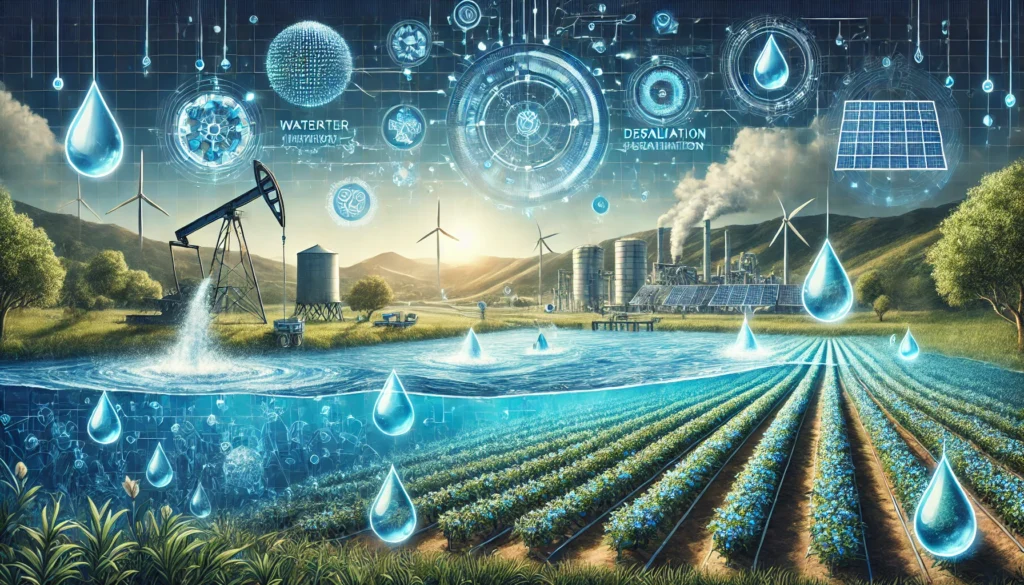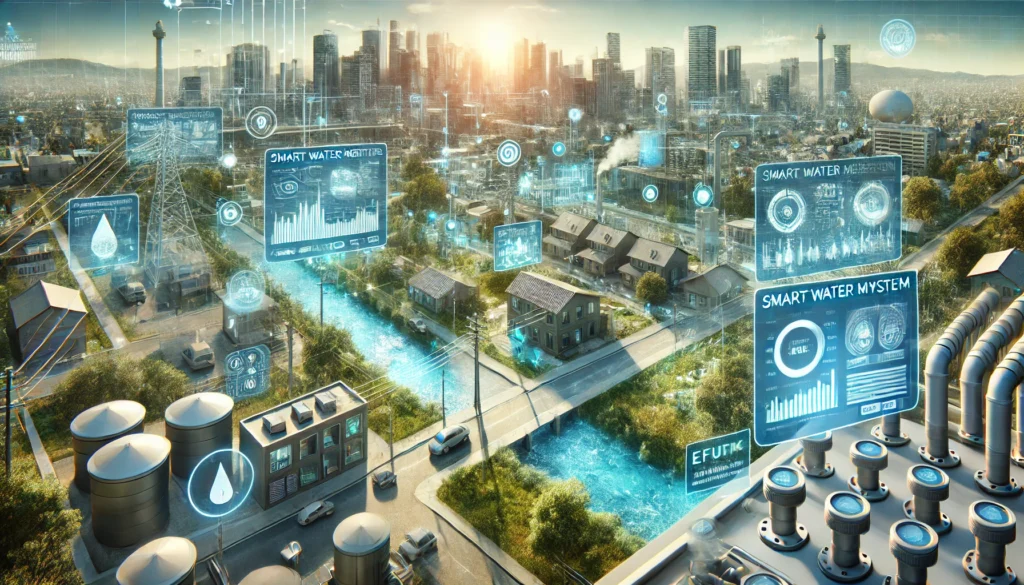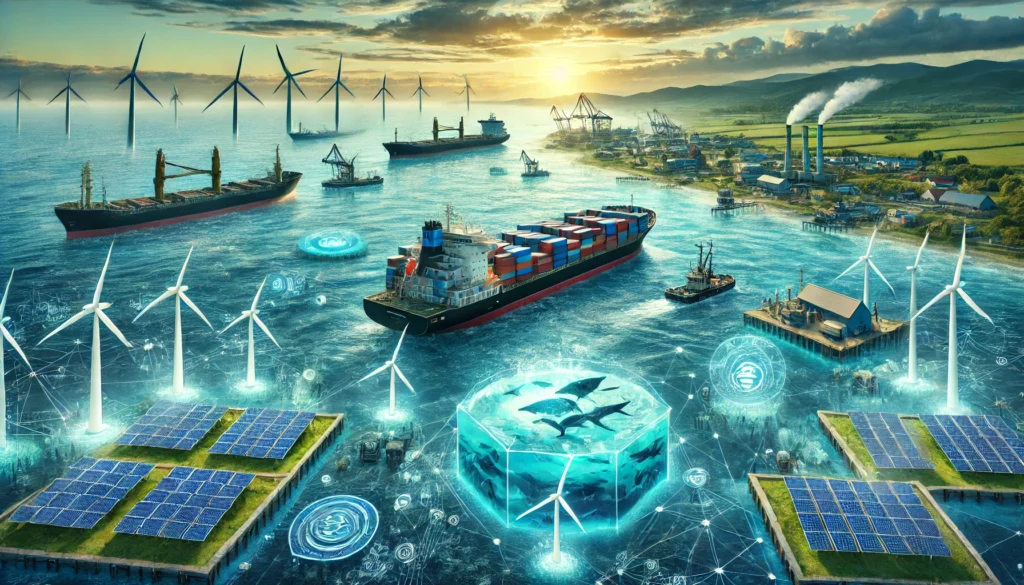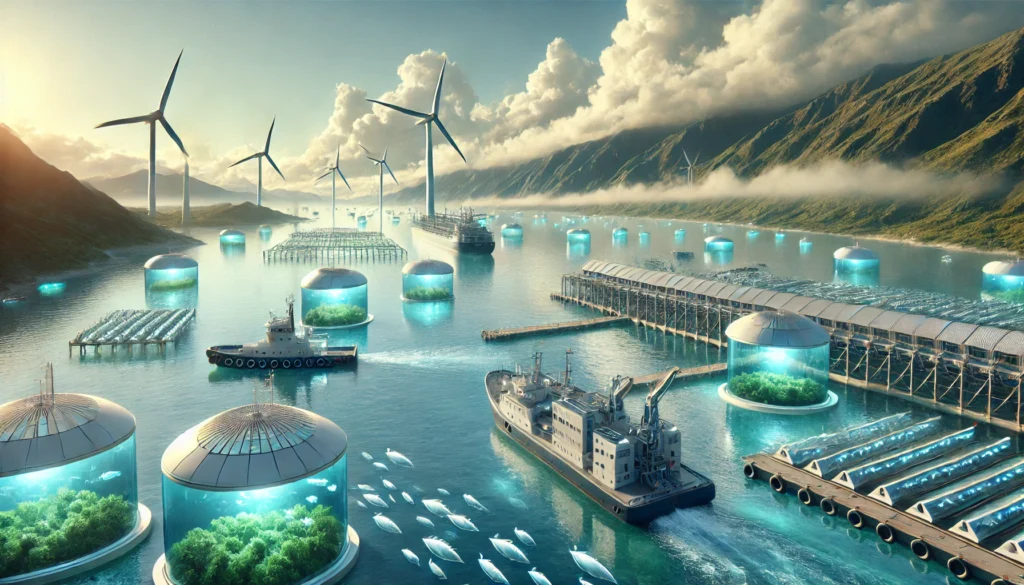Blue Technology refers to innovations designed to support the sustainable use of marine and water resources. It includes the development of environmentally friendly solutions to manage oceanic and freshwater systems. This technology aims to protect aquatic environments, preserve biodiversity, and ensure that water resources are used efficiently. The key idea behind blue technology is to provide solutions that balance human needs with the health of the planet’s water systems.
These technologies encompass various industries, from marine energy and aquaculture to water management and conservation technologies. By developing tools that enhance the efficient use of water while reducing environmental harm, blue technology is vital in addressing pressing global challenges such as water scarcity, pollution, and climate change.
The Role of Blue Technology in Environmental Sustainability
Protecting Marine Ecosystems
Marine ecosystems, including coral reefs and ocean habitats, are increasingly threatened by climate change, pollution, and overfishing. Blue technology aims to protect and restore these delicate ecosystems. For example, advancements in ocean monitoring tools allow real-time water quality, temperature, and biodiversity tracking, enabling better decision-making in marine conservation efforts.
Through initiatives like sustainable fisheries management, ocean-cleaning devices, and coral reef restoration projects, blue technology preserves the biodiversity of our oceans, ensuring they continue to provide vital resources for future generations.
Enhancing Water Efficiency
Water scarcity is a growing global concern, particularly in arid regions. Blue technology includes innovations that improve water management in agriculture, industries, and urban environments. For instance, water-efficient irrigation systems and smart water grids can drastically reduce water waste while maximizing crop production.
Additionally, blue technology contributes to wastewater treatment and desalination processes, making previously unusable water sources available for human consumption or agriculture. These advancements help reduce the pressure on freshwater resources, ensuring they are used sustainably.
Combatting Ocean Pollution
Ocean pollution, particularly plastic waste, is one of our most pressing environmental issues. Blue technology significantly reduces ocean pollution through innovative waste collection, recycling, and reduction systems. Examples include marine robots that collect plastic and other pollutants from the ocean and biodegradable alternatives to plastic products that are less harmful to marine life.
Moreover, innovations in bioremediation, which uses microorganisms to clean up pollutants, help restore the health of polluted waters and coastal areas. This form of blue technology focuses on treating pollutants in a natural, environmentally friendly way.
Key Innovations in Blue Technology
Marine Renewable Energy
Marine renewable energy is a rapidly growing sector of blue technology that harnesses the power of the ocean to generate sustainable energy. Technologies like tidal and wave energy systems capture the natural movement of water to produce electricity. These systems provide an alternative to fossil fuels and help reduce greenhouse gas emissions.
Tidal energy plants and underwater turbines exploit ocean currents and tides, while wave energy converters transform the kinetic energy of waves into usable electricity. These innovations offer immense potential for clean energy generation, especially in coastal regions.
Sustainable Aquaculture
Aquaculture, or fish farming, is an essential source of protein for millions of people worldwide. However, traditional aquaculture practices often contribute to pollution, habitat destruction, and overfishing. Blue technology in aquaculture focuses on creating sustainable practices that minimize these environmental impacts.
Innovative aquaculture systems, such as closed-loop and integrated multi-trophic aquaculture (IMTA), enable more sustainable production. These technologies aim to reduce water usage, prevent contamination of surrounding ecosystems, and ensure that fish farming practices do not deplete natural fish stocks.
Smart Water Management Systems
Smart water management systems are one of the most impactful innovations in blue technology. These systems use sensors, data analytics, and automation to optimize water usage across industries and urban settings. For example, smart water meters help track water consumption in real-time, reducing wastage and promoting the more efficient use of water resources.
In urban settings, smart water grids monitor water flow through pipelines and detect leaks in real time, preventing water loss. These innovations help conserve water while ensuring it is distributed effectively across communities. 
Ocean Data Monitoring
Ocean data monitoring technologies provide crucial information about the health of marine ecosystems, ocean currents, and the impact of climate change on marine life. These monitoring systems use satellites, sensors, and underwater robots to collect data on water temperature, acidity, salinity, and other factors that affect ocean health.
By gathering real-time data, blue technology enables researchers, policymakers, and environmentalists to make informed marine conservation and management decisions. It also supports efforts to combat climate change by providing essential insights into the ocean’s role in regulating global temperatures and carbon levels.
How Blue Technology Supports the Fight Against Climate Change
Blue technology is critical in addressing climate change by reducing carbon emissions and promoting the conservation of vital ecosystems. Here are some of the ways it contributes to climate action:
Carbon Capture and Sequestration
The oceans are powerful carbon sinks, absorbing a significant portion of carbon dioxide from the atmosphere. Blue technologies that protect marine ecosystems, such as kelp forests and mangrove swamps, help maintain the ocean’s ability to capture and store carbon. Additionally, some blue technologies enhance carbon sequestration, such as artificial ocean fertilization or carbon-capture systems in marine environments.
Reducing Carbon Footprint in Marine Industries
Many marine industries, such as shipping and fisheries, contribute significantly to global greenhouse gas emissions. Blue technology supports the development of cleaner, more energy-efficient transportation and food production methods. For example, eco-friendly shipping technologies reduce fuel consumption, and sustainable fisheries use data-driven management techniques to reduce overfishing and increase the efficiency of fish farming.
Blue technology helps reduce the carbon footprint of the entire sector by improving the energy efficiency of marine industries and promoting sustainable practices.
The Future of Blue Technology
The future of blue technology is promising, with innovations emerging that have the potential to significantly enhance sustainability across various marine-related industries. Advancements in ocean renewable energy, water desalination, and marine conservation technologies will continue transforming how we interact with the world’s oceans and freshwater resources.
One exciting development area is combining blue technology with artificial intelligence (AI) and machine learning. These technologies can improve data analysis, predictive modelling, and decision-making, making protecting marine ecosystems easier and optimizing water use in agriculture and urban settings.
Conclusion
Blue technology is playing an essential role in the preservation of marine ecosystems, the efficient use of water resources, and the reduction of pollution. As our world faces increasing environmental challenges, blue technology provides sustainable solutions that benefit both the planet and its people. From renewable energy systems to innovative water management tools, blue technology is helping to create a future where water resources are used responsibly and marine environments are protected for future generations.
By embracing and advancing these technologies, we can ensure a healthier, more sustainable future for our oceans, waterways, and the industries that depend on them. Blue technology is not just about innovation; it’s about building a world that balances human needs with environmental stewardship.
FAQs
1. What is blue technology?
Blue technology refers to innovations designed to promote the sustainable use of marine and water resources, addressing issues like pollution, water scarcity, and marine conservation.
2. How does blue technology protect marine ecosystems?
Blue technology protects marine ecosystems by supporting conservation efforts, reducing pollution, and restoring habitats. Innovations like ocean monitoring and waste collection systems help safeguard ocean life.
3. Can blue technology help with water scarcity?
Blue technology can address water scarcity through innovations like water-efficient irrigation systems, smart water grids, and desalination technologies that make previously unusable water sources accessible.
4. What role does BT play in renewable energy?
BT contributes to renewable energy by harnessing the power of the ocean through tidal and wave energy systems, providing a clean, sustainable source of electricity.
5. How does BT combat ocean pollution?
Blue technology combats ocean pollution through innovative waste collection methods, such as marine robots that remove plastic from the ocean and through the development of biodegradable alternatives to harmful materials.
6. What is the future of BT?
The future of BT lies in further advancements in marine renewable energy, water management, and conservation. AI and machine learning will be pivotal in optimizing these systems for even greater efficiency.



